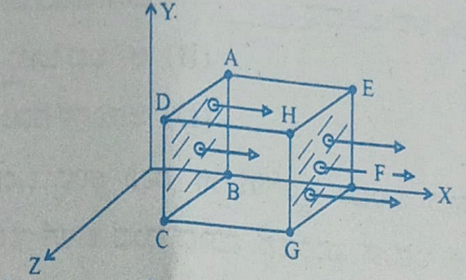Gold sol is not a
- a lyophobic colloid
- negatively charged colloid
- a macro molecular colloid
- a multimolecular colloid
The Correct Option is C
Solution and Explanation
Top Questions on Surface Chemistry
- To form a complete monolayer of acetic acid on 1g of charcoal, 100 mL of 0.5M acetic acid was used. Some of the acetic acid remained unadsorbed. To neutralize the unadsorbed acetic acid, 40 mL of 1M NaOH solution was required. If each molecule of acetic acid occupies P x 10−23 m2 surface area on charcoal, the value of P is _____.
[Use given data: Surface area of charcoal = 1.5 x 102 m2g−1 ; Avogadro’s number (NA) = 6.0 x 1023 mol−1 ]- JEE Advanced - 2024
- Chemistry
- Surface Chemistry
Which compound is added to cement to increase its setting time?
- JEE Main - 2023
- Chemistry
- Surface Chemistry
- What happens when lyophilic sol is added to lyophobic sol. prevention from coagulation precipitation emulsion electrophoresis
- JEE Main - 2023
- Chemistry
- Surface Chemistry
- During bleeding from cut \(FeCl_3\) is used to stop bleeding as
- JEE Main - 2023
- Chemistry
- Surface Chemistry
- Match the terms in Column-I with their description in Column-II and choose the correct option:
Column I (Chemical reactions) Column II (Enzymes used) (i) Glucose → CO2 + Ethanol a Pepsin (ii) Sucrose→Glucose + Fructose b Diastase (iii) Starch →Maltose c Zymase (iv) Protein→Amino acids d Invertase - JEE Main - 2023
- Chemistry
- Surface Chemistry
Questions Asked in KCET exam
- The current in a coil changes from 2A to 5A in 0.3s. The magnitude of emf induced in the coil is 1.0V. The value of self-inductance of the coil is
- KCET - 2023
- Electromagnetic induction
- A stretched wire of a material whose Young's modulus Y = 2 × 1011 Nm-2 has Poisson's ratio of 0.25. Its lateral strain εl = 10-3. The elastic energy density of the wire is
- KCET - 2023
- mechanical properties of solids
- A particle moves along the curve \(\frac{x^2}{16}+\frac{y^2}{4}=1\). When the rate of change of abscissa is 4 times that of its ordinate, then the quadrant in which the particle lies is
- KCET - 2023
- Conic sections
- A point object is moving at a constant speed of 1 ms-1 along the principal axis of a convex lens of focal length 10cm. The speed of the image is also 1 ms-1 , when the object is at _______ cm from the optic centre of the lens.
- KCET - 2023
- spherical lenses
- A cubical Gaussian surface has side of length a = 10 cm. Electric field lines are parallel to x-axis as shown. The magnitudes of electric fields through surfaces ABCD and EFGH are 6kNC-1 and 9kNC-1 respectively. Then the total charge enclosed by the cube is
[Take ε0 = 9 × 10-12 Fm-1]
- KCET - 2023
- Gauss Law
Concepts Used:
Surface Chemistry
The study of the chemical phenomena that occur at the interface of two surfaces which can be solid-liquid, solid-gas, solid-vacuum, liquid-gas, etc.
Read Also: Surface Chemistry
Applications of surface chemistry are:
Adsorption:
The process of attraction and aggregation of the molecules of a substance on the surface of a solid is known as adsorption. For Example, N2 adsorbs on the surface of activated charcoal
Two types of adsorption are:-
- Chemisorption: It is also known as Chemical Adsorption.
- Physisorption: It is also known as Physical Adsorption.
Corrosion:
The process through which the refined metals convert themselves into more stable compounds is known as corrosion.
Crystallisation:
The type of technique used in order to purify the substances to separate Solids from liquids is known as crystallisation.
Heterogeneous Catalysis:
The process wherein a catalyst is used in order to increase the rate of a chemical reaction is known as catalysis. The catalyst does not undergo any transformation and can be recovered in a chemically unchanged state.
There are two types of catalysis:-
- When the catalyst involved and the reacting substances are same states of matter or in the same phase, it is known as Homogeneous Catalysis.
- When the catalyst involved and the reacting substances are in different states of matter or different phases, it is known as Heterogeneous Catalysis.



